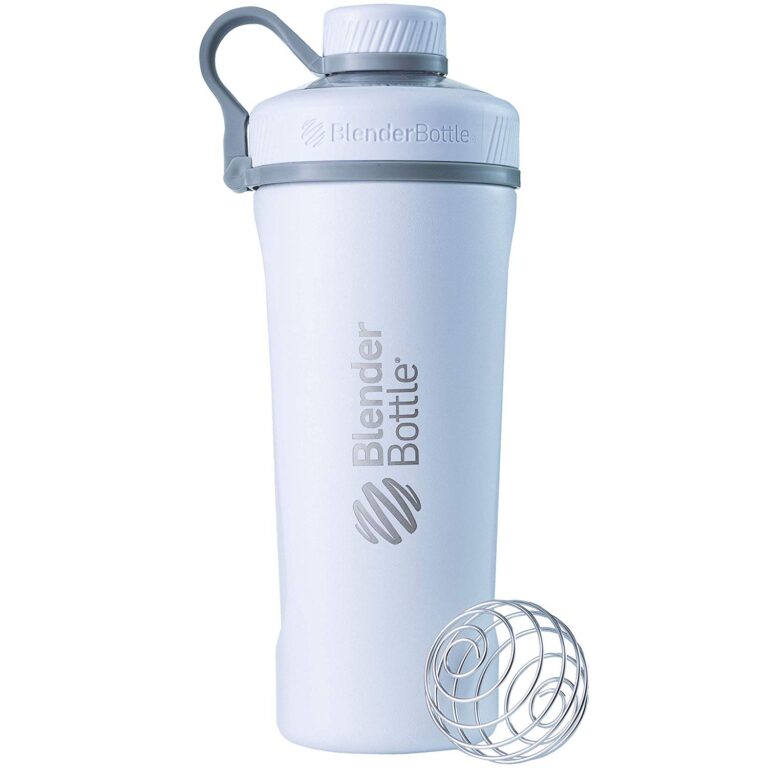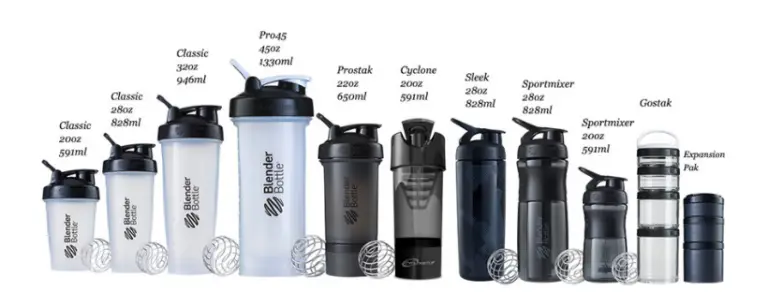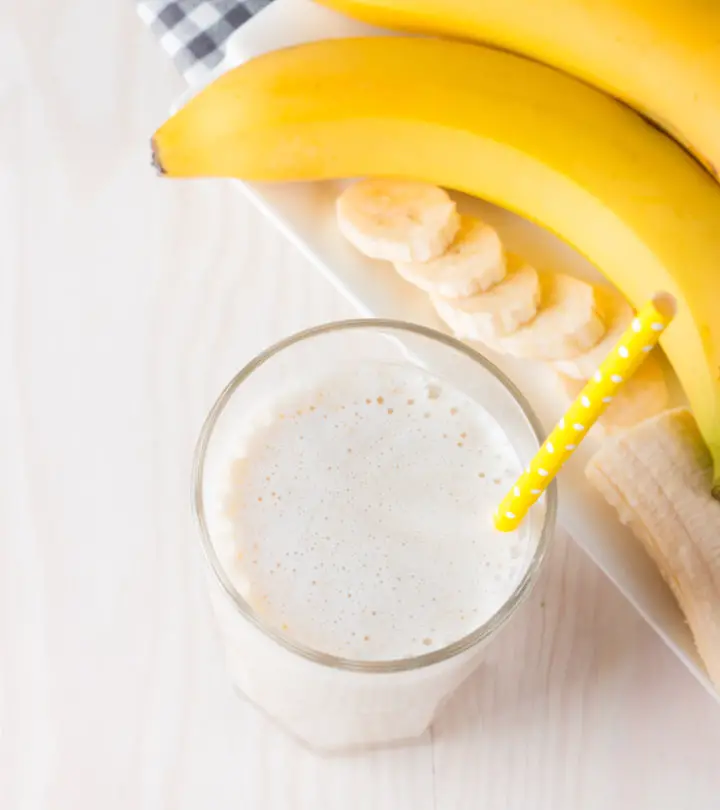Understanding Blender Sizes
Explanation of different blender sizes
Blenders come in various sizes, and choosing the right one for your needs is essential. The size of the blender refers to its capacity, which is measured in liters or cups. Understanding the different blender sizes will help you make an informed decision.
Generally, blenders are available in three main sizes: small, medium, and large.
- Small blenders: These are perfect for individuals or small households. They usually have a capacity of up to 1 liter or 4 cups. Small blenders are compact and ideal for making single servings of smoothies, sauces, or baby food.
- Medium blenders: With a capacity of around 1 to 2 liters or 4 to 8 cups, medium-sized blenders are suitable for small to medium-sized families. They can handle blending larger quantities and are versatile enough to make smoothies, soups, and even crush ice.
- Large blenders: If you frequently entertain guests or need to prepare large batches of food, a large blender is the way to go. These blenders have a capacity of over 2 liters or 8 cups, allowing you to blend large quantities of ingredients at once.
Factors to consider when choosing the right size blender
When deciding on the size of blender to get, consider the following factors:
- Usage: Determine how often you will use the blender and the quantities you typically need. If you only make single servings, a smaller blender may suffice, while frequent large batches may require a larger size.
- Kitchen space: Consider the available countertop or storage space in your kitchen. If you have limited space, a compact blender might be more suitable.
- Budget: Larger blenders with higher capacities often come with additional features and a higher price tag. Assess your budget and prioritize the features that are most important to you.
- Versatility: Think about the types of recipes you plan to make with the blender. If you want to make a variety of dishes, opt for a size that can accommodate different quantities and ingredients.
By considering your specific needs and these factors, you can confidently choose the right size blender to suit your lifestyle and culinary requirements.
Personal Blender Size
Pros and cons of personal blenders
Personal blenders are compact and convenient for individuals who want to make single servings of smoothies, shakes, or blended drinks. They are available in different sizes, ranging from 8 to 32 ounces. Here are the pros and cons of personal blenders to help you decide what size blender to get:
Pros:
- Portability: Personal blenders are small and lightweight, making them easy to carry and travel with.
- Space-saving: Their compact size makes them perfect for those with limited kitchen space.
- Quick and efficient: Personal blenders blend ingredients quickly and require less cleaning compared to larger blenders.
- Cost-effective: Personal blenders tend to be cheaper than larger models.
- Versatility: They can be used for a variety of tasks, such as making smoothies, chopping nuts, blending sauces, and even grinding coffee beans.
Cons:
- Limited capacity: Personal blenders are designed for single servings, so they might not be suitable for larger families or when hosting guests.
- Less powerful: Their smaller motors may not be as powerful as those in larger blenders, which could affect their ability to blend tougher ingredients.
Recommended serving size for personal blenders
The recommended serving size for personal blenders usually ranges from 8 to 16 ounces. This allows for a single serving of a smoothie or a small batch of blended ingredients. However, if you prefer larger servings or plan to use the blender for multiple people, you might consider getting a larger size, such as a 20- or 32-ounce personal blender.
It’s important to consider your specific needs and preferences when choosing the size of your personal blender. Think about how often you will use it, the amount of space available in your kitchen, and the number of people you will be serving. With these factors in mind, you can select the blender that best suits your needs and lifestyle.
Standard Blender Size
When considering what size blender to get, it’s important to note that standard blenders come in a range of sizes. The most common sizes available are 40-48 ounces. These blenders have a capacity that is suitable for most household needs, allowing you to blend ingredients for your daily smoothies, soups, sauces, and more.
Pros and cons of standard blenders
Pros:
- Versatility: Standard blenders can handle a variety of ingredients, including fruits, vegetables, ice, and even nuts.
- Compact: The smaller size of standard blenders makes them convenient for storing in kitchen cabinets or on countertops.
- Affordable: Compared to larger blenders, standard blenders tend to be more budget-friendly.
- Easy to clean: Due to their size, standard blenders are generally easier to clean than their larger counterparts.
Cons:
- Limited capacity: The smaller size of standard blenders means they have a limited capacity, which may not be suitable for larger batches or when entertaining guests.
- Limited power: Standard blenders typically have lower wattage than larger models, which can impact their blending capabilities for tougher ingredients.
Recommended serving size for standard blenders
The recommended serving size for standard blenders is usually around 12-16 ounces. This is typically enough for a single serving of a beverage or a small batch of a sauce or dip. If you often find yourself needing larger quantities, it might be worth considering a larger blender size.
Ultimately, the size of the blender you choose depends on your specific needs and usage. Consider the types of recipes you plan to make, the number of servings you require, and your kitchen space constraints before making a decision.
High-capacity Blender Size
Pros and cons of high-capacity blenders
When deciding what size blender to get, considering a high-capacity blender is worth exploring. These blenders typically have a container size of 64 ounces or more, providing ample room for blending larger batches of recipes or serving sizes.
Pros:
- Saves time and effort: High-capacity blenders can handle larger quantities, making it ideal for individuals who like to meal prep or entertain frequently. You can blend bigger batches of soups, smoothies, or sauces, saving time in the kitchen.
- Versatility: With a larger container, you have the flexibility to make smaller or larger servings according to your needs. You can experiment with different recipes and enjoy the convenience of blending in larger quantities.
- Blend tougher ingredients: High-capacity blenders are equipped with powerful motors, allowing them to handle tougher ingredients like frozen fruits, ice, or nuts without strain. This makes them great for making smooth and creamy textures.
Cons:
- Cost: High-capacity blenders tend to be pricier than standard blenders due to their larger size and more powerful motors. However, they often come with longer warranties and durability, making it a worthwhile investment for those who will make the most out of its capabilities.
Recommended serving size for high-capacity blenders
While the specific serving size depends on your consumption needs, a high-capacity blender is typically recommended for households or individuals who frequently prepare larger batches of recipes or entertain guests. If you often find yourself blending for more than 2-3 people or like to have leftovers for later use, a high-capacity blender can be a valuable addition to your kitchen. It allows you to save time, have more versatility in recipe creation, and accommodate varying serving sizes effortlessly.
Mini Blender Size
Pros and cons of mini blenders
When considering what size blender to get, one option is a mini blender. Mini blenders are compact and perfect for individual use or small servings. Here are some pros and cons to consider when deciding on a mini blender:
Pros:
- Space-saving: Mini blenders are small and take up less counter space, making them ideal for smaller kitchens or for those who don’t have a lot of storage space.
- Portability: Mini blenders are lightweight and easy to transport, making them great for on-the-go use, such as camping trips, office lunches, or travel.
- Cost-effective: Mini blenders are typically more affordable than larger blenders, making them a budget-friendly option.
Cons:
- Limited capacity: Mini blenders have smaller blending jars, which means they can only handle smaller amounts of ingredients at a time. This may not be suitable for larger families or when making large batches of smoothies or soups.
- Less power: Mini blenders usually have lower wattage compared to larger blenders, which may affect their ability to handle tougher ingredients like ice or frozen fruits.
- Fewer features: Mini blenders often lack additional features like variable speeds or preset blending programs that are commonly found in larger blenders.
Recommended serving size for mini blenders
The recommended serving size for mini blenders is typically around 1-2 servings. Their smaller blending capacity makes them perfect for making individual smoothies, sauces, baby food, or single-serve portions. If you are someone who needs to make larger quantities or prefers to meal prep, a mini blender may not be the best option for you.
Overall, mini blenders are a great choice for those looking for a compact and portable blender that can handle smaller portions. Consider your specific needs and preferences before deciding if a mini blender is the right size for you.
Factors to Consider
When deciding on the size of a blender to purchase, there are a few important factors to consider. These factors will help ensure that you choose the right blender that fits your needs and preferences.
Kitchen space and storage
One of the first things to consider is the amount of kitchen space you have available and your storage capacity. If you have a small kitchen with limited countertop or cabinet space, it would be wise to choose a compact blender that can be easily stored when not in use. On the other hand, if you have a spacious kitchen with ample storage, you may opt for a larger blender with more capacity.
Frequency of use
Another factor to consider is how often you plan on using the blender. If you anticipate using it daily or several times a week, it may be worth investing in a larger blender that can handle more ingredients and has a higher wattage for blending power. If you only plan on using it occasionally, a smaller blender may be sufficient for your needs.
Types of recipes you plan to make
Consider the types of recipes you plan on making with your blender. If you want to make smoothies or beverages for multiple people, a larger blender with a bigger capacity would be more suitable. However, if you primarily plan on blending single servings or making sauces and dips, a smaller blender may be sufficient.
It is also important to keep in mind that larger blenders often come with additional features and attachments, such as different sized jars or processing bowls, which can be useful for a variety of recipes.
By taking into account your kitchen space, frequency of use, and the types of recipes you plan to make, you can make an informed decision on the size of blender that would be best suited for you.
Blender Accessories and Attachments
Blender attachments and their uses
When deciding what size blender to get, it’s important to consider the accessories and attachments available. Different sizes of blenders may come with varying options for attachments, each serving a specific purpose. Here are some of the common attachments found in blenders and their uses:
- Pitcher or Jar: This is the main component of a blender where you blend ingredients.
- Blade Assembly: The blade assembly is responsible for cutting and blending ingredients. Different blenders may have different blade designs.
- Tamper: A tamper is a tool that helps push ingredients down into the blades while the blender is in use. This is particularly useful when blending thick or frozen ingredients.
- Lids: Blender lids provide a seal and prevent any spills or leaks during blending.
- Additional Jars: Some blenders come with different sizes of jars or containers, allowing you to customize the amount of ingredients you blend.
Compatibility with different blender sizes
When choosing a blender size, it’s important to consider the compatibility of attachments with different blender models. Some attachments may only be compatible with specific blender sizes, and others may be interchangeable between different models.
For example, if you want to invest in additional jars or containers, make sure they are compatible with the blender size you choose. Additionally, check if the blade assembly and tamper are designed to fit the desired blender size.
It’s also worth noting that some manufacturers offer separate attachments and accessories that can be purchased separately and are compatible with a range of blender sizes.
Considering the accessories and attachments you may need and checking their compatibility with different blender sizes will help you make an informed decision on the right size blender that suits your needs.
Comparison of Blender Sizes
Overview of personal, standard, high-capacity, and mini blenders
When it comes to choosing a blender, the size of the blender is an important factor to consider. There are several different sizes available in the market, each catering to different needs and preferences. Here is an overview of the most common blender sizes:
- Personal Blenders: These are compact blenders that are perfect for individuals or small households. They have smaller blending jars and are designed for single servings or small portions. Personal blenders are lightweight and portable, making them great for on-the-go use or for those with limited kitchen space.
- Standard Blenders: These are the most common size of blenders found in kitchens. They have medium-sized blending jars that can accommodate larger quantities of ingredients. Standard blenders are versatile and suitable for making smoothies, sauces, soups, and other blended recipes for a small to medium-sized family.
- High-Capacity Blenders: These blenders are larger and are designed for heavy-duty use. They have larger blending jars and powerful motors that can handle tougher ingredients like nuts and ice. High-capacity blenders are ideal for large families, frequent entertainers, or anyone who wants the convenience of blending in larger batches.
- Mini Blenders: As the name suggests, mini blenders are the smallest size available. They are compact and often come with detachable blending jars that can be used as portable drinking containers. Mini blenders are great for blending small portions or for individuals who want a convenient way to blend and drink on the go.
Pros and cons of each size option
- Personal Blenders: Pros: Portability, compact size. Cons: Limited capacity, not suitable for larger servings or heavy-duty blending.
- Standard Blenders: Pros: Versatility, moderate capacity. Cons: May not handle very tough ingredients.
- High-Capacity Blenders: Pros: Large capacity, powerful blending capabilities. Cons: Bulkier, may take up more counter space.
- Mini Blenders: Pros: Portability, compact size. Cons: Limited capacity, may not handle tougher ingredients.
When deciding on the size of blender to get, consider your blending needs, storage space, and budget. It’s also worth considering if you’ll be using the blender for personal use or for a larger household. Ultimately, the right size blender is the one that suits your specific requirements.
What Size Blender Should I Get?
Choosing the right size blender can make a big difference in your blending experience. Whether you plan on using it for making smoothies, sauces, or soups, it’s important to consider your needs, budget, and space.
Factors to consider when choosing blender size:
1. **Capacity**: Think about the number of servings you typically make. If you make larger quantities, opt for a blender with a larger capacity (around 64 ounces). For personal use or single servings, a smaller blender with a capacity of 32-48 ounces might suffice.
- Kitchen Space: Consider the counter space you have available. If you have limited space, a compact or personal blender would be a suitable choice. For larger kitchens with ample space, a full-sized blender can be a great addition.
- Power: A blender’s power is often correlated with its size. Larger blenders generally have more powerful motors, allowing them to handle tougher ingredients and achieve smoother blends. If you plan on blending tougher ingredients like frozen fruits or ice, a larger and more powerful blender would be ideal.
- Budget: Blenders come in a wide range of prices. Larger blenders with advanced features tend to be pricier, while smaller blenders are generally more affordable. Consider your budget and determine the features that are most important to you.
Conclusion:
In conclusion, the size of the blender you should get depends on your individual needs and circumstances. If you mainly make single servings or have limited space, a smaller blender would be a practical choice. However, if you make larger quantities or need a blender with more power, a larger one would be more suitable. Consider the factors mentioned above, and also check customer reviews to ensure you get a blender that meets your requirements.
FAQ (Frequently Asked Questions):
– Can I use a personal blender for making smoothies for multiple people?Yes, but it may require multiple blending processes due to the smaller capacity.
- Can I use a larger blender for making single servings?
Absolutely! Larger blenders often come with different speed settings, allowing you to make smaller quantities efficiently. - Are compact blenders less powerful than full-sized blenders?
Not necessarily. Some compact blenders are equipped with powerful motors and can handle the same tasks as larger ones. It’s important to check the specifications and customer reviews to ensure the blender meets your power needs.



